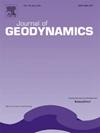The Southern Central Andes developed though a complex succession of magmatic and deformational episodes, which after more than a century of studies, are still the subject of intense debate. One of the main controversies lies in the ambiguity regarding whether there was a single contractional phase in the Neogene or whether there were multiple contractional phases distributed over the last ∼110 My. We present 33 new K/Ar ages obtained from retroarc subvolcanic intrusives and lava flows and document their crosscutting relations with the host rock strata. These data enabled us to constrain the deformation's timing in several contractional structures along the eastern slope of the southern Central Andes ∼36.5°S. In the hinterland, the timing of compressional deformation has been constrained to the following: between Late Cretaceous and late Miocene age determined by Neogene dikes crosscutting Mesozoic folded strata; pre to syn-late Miocene determined by dikes intruded in the axial surfaces of small anticlines; and post-early Oligocene determined by folded sills. In the foreland, the timing of compressional deformation has been constrained to between the Late Cretaceous and early Oligocene by dikes crosscutting pre-deformed strata; to the post-Oligocene by folded sills; to the pre- and post-middle Eocene by Eocene to Miocene dikes crosscutting older folded strata; and to the post to syn-middle Miocene by folded lava flows. We conclude that two pre-Neogene and one Neogene contractional phases, and various retroarc magmatic events have affected this segment of the retroarc. We discuss our observations in relation to previous proposals, separating the tectonic evolution of the area into six tectonic scenarios from the late Early Cretaceous to the present.



